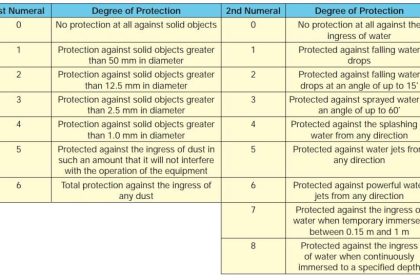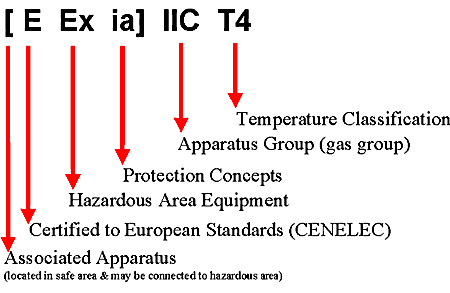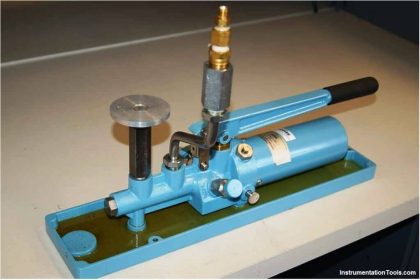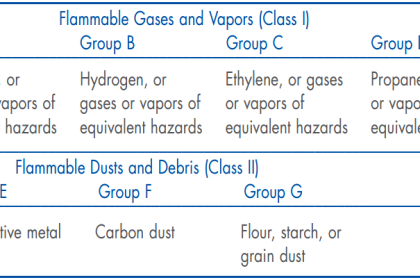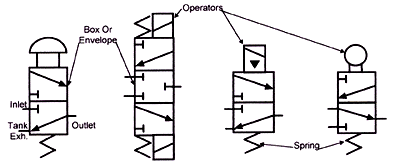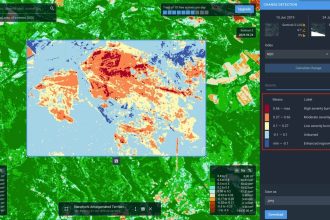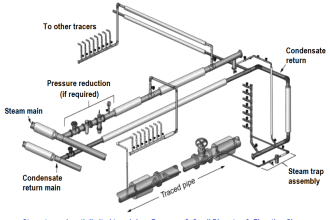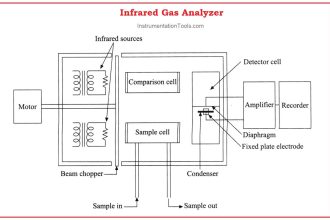Electrical equipment sometimes must be installed in areas where combustible vapors and gases are used or may be present. These are commonly referred to as “hazardous locations”, and are defined by the National Electrical Code (NEC) in the US, or the Canadian Electrical Code (CEC) in Canada.
When equipment must be installed in hazardous locations, there are strict requirements for the construction of the installation, including materials and design requirements.
To prevent inadvertent ignition of flammable gases and vapors by electrical equipment, the two most common methods of protection are “Explosion Proof” and “Intrinsically Safe”. These methods are also relate to gas detection equipment. Here we are discussing these methods in terms of fire and gas detection systems.
Explosion Proof
Generally speaking, “explosion proof” is the more commonly used method for detector/sensor assemblies for fixed gas detection systems, where higher voltages and power requirements may be encountered, and the installation is permanent.
Intrinsically safe method can also be used for permanent installations where the detector/sensors are relatively low power devices. Almost all portable instruments use the “intrinsically safe” method.
An “explosion proof “ classification for a sensor/transmitter means that the housing has been engineered and constructed to contain a flash or explosion.
Such housings are usually made of cast aluminum or stainless steel and are of sufficient mass and strength to safely contain an explosion should flammable gases or vapors penetrate the housing and the internal electronics or wiring cause an ignition.
The design must prevent any surface temperatures that could exceed the ignition temperature of the gases or vapors covered by its Group rating (see below). If the sensing element is a high-temperature device (e.g. Catalytic bead or “pellistor”), it may be protected by a flame arrestor to prevent the propagation of high temperature gases to the ambient atmosphere.
Intrinsically Safe
An “intrinsically safe” classification and design means that an electronic circuit and it’s wiring will not cause any sparking or arcing and cannot store sufficient energy to ignite a flammable gas or vapor, and cannot produce a surface temperature high enough to cause ignition.
Such a design is not explosion proof, nor does it need to be. For permanent installations, such an installation may include “intrinsically safe barriers” that are located outside the hazardous location, and limit the amount of energy available to the device located in the hazardous area.
The North American classifications for hazardous locations as related to flammable gases and vapors:
Class I: Gases and vapors
Division 1: Gases or vapors are usually present and/or may be present at any time in sufficient concentrations for an explosion hazard.
Division 2: Gases or vapors are not normally present and are present only in the event of a leak in some kind of containment vessel or piping, again in potentially hazardous concentrations.
Groups A, B, C, D: Groups of atmospheres categorized by the volatility and/or ignition temperatures. “A” is the most hazardous and “D” is the least hazardous group for gases and vapors.
Group A: Atmospheres containing acetylene.
Group B: Atmospheres containing hydrogen or gases or vapors of equivalent hazard.
Group C: Atmospheres containing ethyl-ether vapors, ethylene, or cyclo-propane.
Group D: Atmospheres containing gasoline, hexane, naptha, benzene, butane, propane, alcohol, acetone, benzol, lacquer solvent vapors, or natural gas (methane).
Article Source: RKI Instruments,


